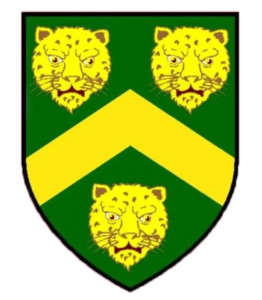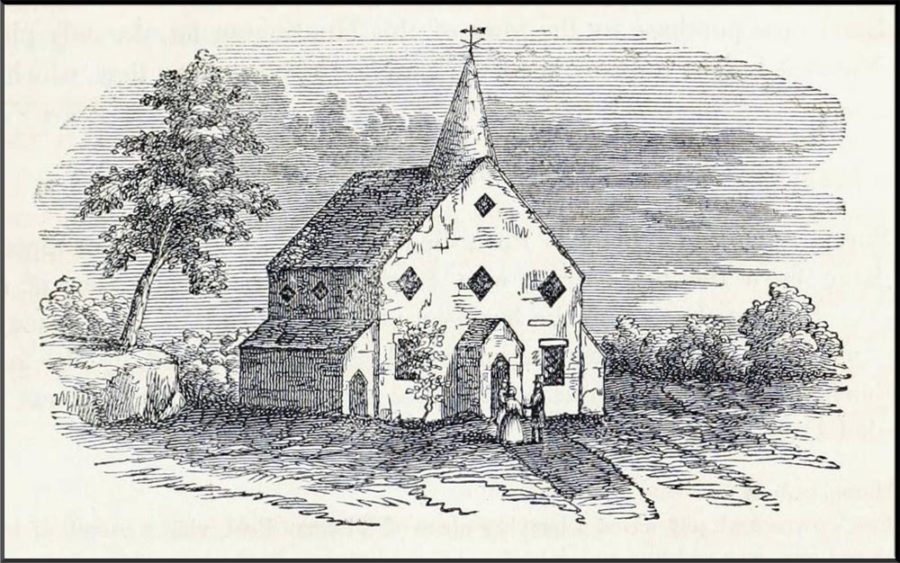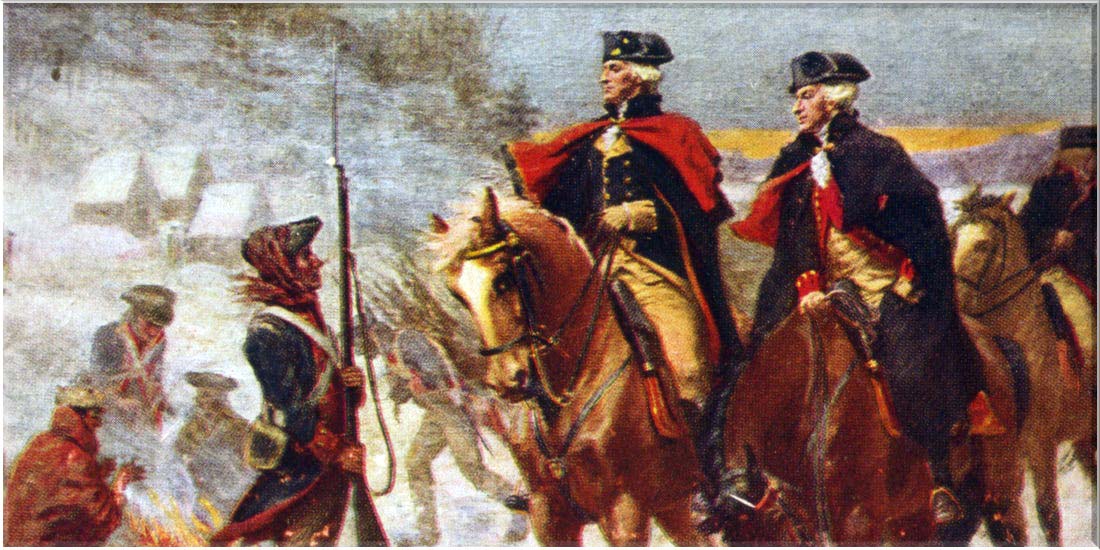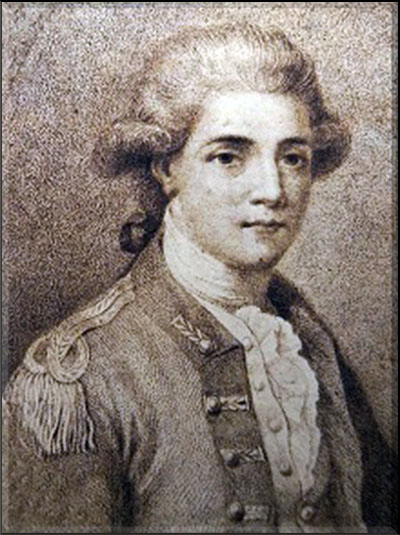There is a special group of men who were instrumental to the early development of Norwich. IconicNorwich .org has designated men as the “Knights of Norwich.”
There is also an elite group of women who significantly impacted and helped form the backbone of Norwich. IconicNorwich.org has designated these women as the “Grande Dames of Norwich.” In addition to the Knights of Norwich and the Grande Dames of Norwich, there are hundreds of others who have been designated as the “Norwich Notables.”
Choose A Knight of Norwich
1588-1683 Uncas
*Place cursor over image to magnify
The exact dates of the birth and death of Uncas are unknown, however, his legacy and impact, on today’s southeastern Connecticut, is illustrious. Uncas was married to the daughter of the principal Pequot sachem Tatobem. They had four sons and at least one daughter. Owaneco (Uncas’ father was also named Owaneco), Attawanhood, (a.k.a. Joshua) who became the sachem of the western Niantic Indians, John I, and Benjamin.
Uncas’ brother was Waweekus, for whom Waweekus Hill in Norwich is named.
Uncas lived in an era of dramatic change in Connecticut. Native America was in the early stage of being colonized by Europeans from Holland and England. Both Native Americans and Europeans needed strong, highly respected leaders, such as Uncas, who could protect his own people’s interest while satisfying the demands of coming certain change.
At a young age Uncas became conversant in his native language, English and possibly Dutch. This knowledge helped him to understand the foreign ways of the Europeans. Upon becoming Sachem of the Mohegan, after much tribulation, he served as the primary intermediary between the Mohegan and the Europeans.
Major John Mason, the Commissioner of the United Colonies, was a friend of Uncas and had been called on to negotiate several quarrels between Uncas and other Native Americans. In 1659, Uncas and his sons, Owaneco and Atttawanhood, sold a large tract of land, the “Nine Mile Square”, to the European colonists in Connecticut. Soon after the purchase Major Mason, Reverend John Fitch, and 33 others moved to Norwich and became the founding fathers of Norwich.
The following is an excerpt from Info Source 2 :
“Uncas was exceptional and showed by his actions that he loved not only his people, but also cared about his defeated enemies and even admired the English. When overpowered by his enemies, he either turned his other cheek to avoid conflict or he turned the tables on them. He created the sovereign Mohegan nation. And in that nation he was first in friendship, first in his word of honor, and first in stability and dependability. He was a Mohegan rock. In fact the word sachem, as Uncas was called, means “rock man” and in Mohegan they would say, “Ne-woe-me-suns-mo,” which means, ‘Are you going to the rock?’ “
Uncas was respected by the Mohegan and the European settlers in America. After his death he has memorialized in many ways. The sidebar, below, describes United States Navy ships that have beened named in his honor.
USS Uncas
Four United States ships have been named in honor of Uncas over the past 160 years. These ships have served a variety of purposes in several different military campaigns.
The photo shows the 1917 USS Uncas patrol-boat used to protect New York City during World War I.
Click here for more details
A 192-ton steamer used by the Union Navy during the Civil War. In June 1862 it engaged a company of Confederates at Yellow Bluffs and St John’s on the coast of Florida.
Click here for more details
An ocean-going tug boat built in New Jersey. It was engaged in hostilities during the Spanish-American and was later used as a tender for the North American Fleet.
Click here for more details
A wooden-hulled, armed, motorboat that was used by the Navy as a patrol boat during World War I. It conducted local patrol operations in the New York City area near Brooklyn.
Click here for more details
A tug boat that served during World War II in the United States Atlantic Fleet. Her most memorable service came in early November 1942, when she was awarded a battle star for helping defend a U.S. convoy from German submarines sailing in the North Atlantic Ocean.
The life and times of Uncas are well documented. Info Source 1 is a modern, scholarly biography of Uncas. Info Source 2 contains a succinct overview of Uncas’ relationships with his family, other Native Americans tribes and the English.
Acknowledgements
“Uncas, The First of the Mohegans,” by Michael Leroy Oberg (2006)
“Uncas and Miantinomo,” by Hans DePold
“The Young Chief Uncas,” by John Mix Stanley, 1869
The complete list of sources may be found by clicking the “Bibliography” button, and, then typing “Uncas” in the SEARCH box.
Mason Family Coat of Arms
1600-1672 MAJOR JOHN MASON
In 1660, at the age of 60, Major John Mason moved from the mouth of the Connecticut River in Saybrook to the head of the Thames River to Norwich. He was joined there by his future son-in-law Reverend James Fitch and most of Fitch’s Puritan congregation.
They were the first European proprietors of the nine-miles square that was purchased from the Mohegan Sachem Uncas. Mason christened the town he founded “Norwich.” It is believed by some that the rampant lions shown in his family Coat of Arms (left) form the basis of today’s City of Norwich Seal (right).
*Place cursor over image to magnify

During his twelve years in Norwich, John Mason served for nine years as Deputy Governor (1660 to 1669), and helped to write the Connecticut Charter. He served as acting Governor of Connecticut from 1661 to 1663 while Gov. John Winthrop Jr. went to England to obtain approval of the Charter from King Charles II.
Both in civil and military matters Major John Mason was one of the most trusted men in Connecticut during his three and a half decades of residence there. In his latter years, the formal colony records referred to him simply as “the Major,” without forename or surname.
FAMILY
Major John Mason’s first child was a daughter.
Israel Mason Bissell (c1637-c1688). Wife of John Bissell Jr. Her mother’s name is unknown
Major Mason married Anne Peck (1619-1672) in July 1639. They had eight children. Their children were :
1) Ann Mason (1640-1640) : Died as an infant on October 7, 1640
2) Priscilla Mason Fitch (1641-after 1710) : Wife of Rev. James Fitch
3) Samuel Mason (c1644-1705) : Husband of Judith Smith Mason
4) John Mason Jr. (1646-1676) : Husband of Abigail Fitch Mason the daughter of Rev. James Fitch
5) Rachel Mason Hill (1648-1679) : Wife of Charles Hill
6) Anne Mason Brown (c1650-c1709) : Wife of John Brown III
7) Daniel Mason Sr. (1652-1736) : Husband of Margaret Denison Mason and later Rebecca Hobart Mason
8) Elizabeth Mason Fitch (1654-1684) : Wife of James Fitch Jr. the son of Rev. James Fitch
Acknowledgements
“Connecticut’s Own Major. A Profile of John Mason, 1600-1672,” by Williams Haynes (1955)
John Mason Statue Advisory Committee Report (1995)
The complete list of sources may be found by clicking the “Bibliography” button, and, then typing “Mason” in the SEARCH box.

1622-1702 Reverend James Fitch
Reverend James Fitch is one of Norwich’s founding fathers. He was the Puritan minister, who led the majority of his congregation in Saybrook to Norwich. The move occurred in the spring of 1660, shortly after the colonists purchased the land upon which Norwich now stands.
At the age of 38, Rev. Fitch established the first church in Norwich, where he served the needs of his congregation for 36 years. In 1702 he moved to Lebanon Connecticut, where he died soon after.

James Fitch immigrated from England with his mother and brothers circa 1638. He came to America at the age of 16, on the ship Defense along with Reverend Thomas Hooker (a friend of Fitch’s father). Shortly after arriving, Fitch studied theology under the tutelage of Rev. Hooker and Rev. Samuel Stone.
Fitch was ordained in 1646. After a new church was built in Saybrook, he became its first minister. After 14 years of service in Saybrook, the congregation was given permission to move to Norwich by the General Court of Connecticut.
The “Church on the Hill,” shown on the left, was built for Rev. Fitch’s congregation in Norwich in 1675.
The Church on the Hill (1676-1715)
From 1660 to 1675 the members of Rev. Fitch’s congregation met in a building at the southeast corner of the Norwichtown Green, near the residences of Rev. Fitch and Major John Mason. “This was probably a plain, rough, barn-like structure without steeple, porch, or gallery. In 1668, a rate was collected to pay Samuel Lathrop, for repairing and heightening it.” .
In 1673 the town contracted with John Elderkin and Samuel Lathrop to build a new house of worship. The site chosen was on the hill, overlooking the greater part of the community. The hill’s steep, rocky ledge is known today as “Meeting House Rocks”. The present-day First Congregational Church, dedicated into service on June 18, 1801, is located at the base of the Meeting House Rocks.
At this time, just before King Philip’s War, when Indian attacks were constantly expected, it is believed that the townspeople thought this lofty site, commanding an extensive outlook, might serve as a watch tower, garrison post, and as a house of worship. So great was the dread of Indian invasions that, that the settlers carried their muskets to church and stacked them outside. A guard was set to watch and the militia sat near the door to be ready in case of alarm.
The “Church On the Hill” was completed in 1675. Its estimated cost was 428 pounds sterling ($101,500 in today’s dollars). However, upon completion of the project John Elderkin claimed that the building expenses had much exceeded this sum. The town gave him a grant of land to compensate him for the cost overrun.
In the winter time, when the winds howled and whistled around this church in its exposed position, hot cold and cheerless it must have been, and how little could have availed the foot-muffs and heated stones to keep the congregation warm.
Rev. Fitch’s congregation was seated in pews according to Rank. There were eight classes of “dignity”.
In 1689 a lean-to was added to the building and several new pews were added. Later in 1705 new clapboards and shingles were added and in 1708 a bell was suspended from a scaffolding on the ridge west of the meeting house. In 1709-1710 it was voted to build a new meeting house. The new meeting house, also built on the hill, was completed in 1713 and the old “Church on the Hill” was sold in 1714-1715 to Nathaniel Rudd of West Farms (present-day Franklin, CT).
(Info Source 2)
FAMILY
James Fitch married Abigail Whitfield (1622-1659) in October 1648. They had six children. Their children were :
1) James Fitch Jr. (1649-1727) : Husband of Elizabeth Mason Fitch the daughter of Maj. John Mason
2) Abigail Fitch Mason (1650-1687) : Wife of John Mason Jr. the son of Maj. John Mason
3) Elizabeth Fitch Taylor (1652-1689) : Wife of Edward Taylor
4) Hannah Fitch Mix (1653-after 1707) : Wife of Thomas Mix
5) Samuel Fitch (1655-1725) : Husband of Mary Ann Brewster Fitch
6) Dorothy Fitch Bissell (1658-1691) : Wife of Nathaniel Bissell
Five years after Abigail died, Fitch married Priscilla Mason the daughter of Maj. John Mason. They had eight children. Their children were:
1) Daniel Fitch (1665-1711) : Husband of Mary Sherwood Fitch
2) John Fitch (1665-1743) : Husband of Elizabeth Waterman Fitch the daughter of Sgt. Thomas Waterman
3) Jeremiah Randall Fitch (1670-1736) : Husband of Ruth Gifford Fitch the daughter of Stephen Gifford
4) Jabez Fitch (1672-1746) : Husband of Elizabeth Appleton Fitch
5) Anne (1675-1715) : Wife of Lt. Joseph Bradford the grandson of the Mayflower’s Gov. William Bradford
6) Nathaniel Fitch (1679-1759) : Husband of Anne Abell Fitch and later Mindwell Higley Fitch
7) Joseph Fitch (1681-1741) : Husband of Sarah Mason Fitch and later Anne Whiting Fitch
8) Eleazer Fitch (1683-1748) : Husband of Martha Brown Fitch
Rev. James Fitch is buried in Old Cemetery in Lebanon, Connecticut.
The epitaph on the monument erected in Lebanon Connecticut in honor of Reverend Fitch reads :
HE WAS A MAN AS TO THE
SMARTNESS OF HIS GENIUS,
THE SOLIDITY OF HIS JUDGEMENT,
HIS CHARITY, HOLY LABORS,
AND EVERY KIND OF PURITY
OF LIFE, AND ALSO AS TO HIS SKILL
AND ENERGY OF PREACHING,
INFERIOR TO NONE.
FUN FACT : Johnny Cash and Patsy Kline were descendants of Rev. James Fitch, by 16 degrees.
Acknowledgements
WikiTree
“History of Norwich, Connecticut: From Its Possession From the Indians, to the Year 1866,” p 148, by Frances Manwaring Caulkins
“Puritan in the Wilderness: A Biography of the Reverend James Fitch, 1622-1702,” by John T. Fitch (1995)
“History of Norwich, Connecticut: From Its Possession From the Indians, to the Year 1866,” p 129, by Frances Manwaring Caulkins
The complete list of sources may be found by clicking the “Bibliography” button, and, then typing “Fitch” in the SEARCH box.
Thomas Leffingwell Memorial at Ft. Shantok
*Place cursor over photo to enlarge
1622-1714 Lt Thomas Leffingwell
Lt. Thomas Leffingwell was one of the original settlers of Norwich. He was a bold, yet mild mannered, Christian man, filled with compassion for his fellow man. He is best known for his daring rescue of Uncas at Fort Shantok.
In 1645 the Mohegan and Narragansett Indians were at odds with each other. Uncas, along with a small band of his tribal members, had encamped at a point of land surrounded by water, near present-day Ft. Shantok.
The Narragansett were setting a trap to keep them at a disadvantage and force starvation on the Mohegan tribe. Uncas knew he was in trouble, so he sent word to his English friends at Saybrook for help. History is conflicted as to whether Leffingwell acted alone or with a group of military men. Either way, documents record Thomas Leffingwell loaded a canoe with beef, corn and other sustaining food and paddled to the Mohegan encampment. Once the Narragansett saw that Uncas and his band were saved, they pulled back from their siege.
Origin Of The Leffingwell Name
The family, called Leffingwell in the 15th century and Leppingwell in the 16th, took its name from a lost place recorded as Liffildeuuella in 1086 (from the Old English personal name Lēofhild + Old English wella ‘well, spring, stream’), which may survive in a corrupt form in Levit’s Corner in Pebmarsh (Essex), into which their possessions extended.
English: Habitational name from Leppingwells in Essex, which is recorded as Leffingwelles in 1561 and owed its name to the possessions there of the family of Robert de Leffeldewelle (1302), who is called Leffingwell in an Elizabethan transcript of the Court Rolls.

Uncas was grateful for Leffingwell’s bravery and assistance. Several years later, in 1659, Uncas and his sons conveyed the official deed to Leffingwell and 34 other proprietors for the entire tract of the Nine-Miles Square, upon which the Norwich now sits.
Lt. Thomas Leffingwell’s son, Ensign Thomas Leffingwell, obtained a house from Stephen Backus in December 1679. Ensign Leffingwell furnished this house with elegance and style. By 1701, he was granted permission to open an ordinary (inn). This house became a valuable supplier of provisions for the Revolutionary War and its soldiers. The house is one of Connecticut’s oldest buildings and is now the home of the Leffingwell House Museum. The photo of the museum shown above was taken in 1961.
The book “Thomas Leffingwell The Connecticut Pioneer Who Rescued Chief Uncas and the Mohegans”, by Russell Mahan, (2018) is an excellent resource that explores all aspects of Lt. Leffingwell’s life.
Acknowledgements
“Lt. Thomas Leffingwell, A Founder of Norwich, Connecticut”, by Nancy Riley
“A Complete History of Connecticut, Vol. 1,” p 236 , (1818) by Benjamin Trumbull
Leffingwell Inn (1961), Library of Congress
The complete list of sources may be found by clicking the “Bibliography” button, and, then typing “Leffingwell” in the SEARCH box.
1731-1796 Samuel Huntington
Samuel Huntington was a signer of the Declaration of Independence and a founding father of the United States. Some historians also consider him the first legitimate President of the United States.
In his early years he was a cooper’s apprentice in his native town of Windham, CT. Samuel studied law books in his spare time, and at age 22 he passed the test to practice law in Connecticut.
Two years later, in 1754, he moved to Norwich, where he set up a law practice, and married Martha Devotion, a minister’s daughter. Shy and quiet, and not much of a speaker or writer, Huntington won the respect of his neighbors for his fairness and hard work.
Huntington was elected to the Connecticut Legislature in 1764, and eight years later was made a judge. He was elected to the 2nd Continental Congress in late 1775, and took his seat early the next year. Samuel Huntington represented Connecticut in the 2nd Continental Congress from 1776 to 1781, serving as President of the Congress from September 1779 to July 1781.
When the 2nd Continental Congress convened, it was the first time that representatives from all thirteen colonies united together as a single group of united states. During this congress the nation’s first framework of government, the Articles of Confederation, took effect on March 1, 1781. Since Huntington was President of this Congress, many believe that he was the first legitimate President of the United States.
In 1784 he was appointed Chief Justice of the Superior Court of Connecticut. Between 1786 and 1796, he served as Governor of Connecticut.
Acknowledgements
“Connecticut Congressman: Samuel Huntington, 1731-1796”, by Larry R. Gerlach
“Huntington, A Forgotten Giant in American History,” 07/13/2008, by Bill Stanley
SamuelHuntington.org
The complete list of sources may be found by clicking the “Bibliography” button, and, then typing “Samuel Huntington” in the SEARCH box.
1743-1818
General Jedediah Huntington
Jedediah Huntington, known as Jed, was born in Norwich, August 4, 1743. From an early age he was groomed for success. He graduated at Harvard College with distinguished honor in the class of 1763.
The high social rank of his family is indicated by the order of his name on the college catalog, it being the second in the list of his class, above that of John Quincy. A Master’s degree was also conferred on him by Yale College in 1770.
After leaving college he became associated with his father in commercial pursuits, and was engaged in this business when the Revolutionary cloud began to darken. He soon became noted as one of the Sons of Liberty and an active Captain of the militia.
The bursting of the storm found him ready. Just one week after the firing of the first shot at Lexington he reported to Cambridge Massachusetts with a regiment from Norwich under his command. He was ordered to occupy Dorchester Heights in March 1776. After the evacuation of Boston by the British, he and his army marched toward New York. Along the way, they stopped in Norwich at his father’s home in Norwich, where he entertained the Commander in Chief, George Washington.
Jedediah Huntington married Faith Trumbull Huntington, the daughter of Jonathan Trumbull, the Governor of Connecticut from 1766-1784. They had their only son, Jabez on September 17, 1767. Faith, (known as Faithy by her friends and family) was seen as a mentally fragile woman. She was deeply affected by the horrors of war and did not survive. (Details are provided in Info Source 2). Huntington suffered many challenges in the coming years. Not only was he dealing with the grief of the untimely death of his wife on November 24, 1775, he also became ill and bedridden, and could not lead his regiment for a period of time.

Later, in December of 1777, General Huntington and his brigade, consisting of the 1st, 2nd, 5th, and 7th Connecticut Regiments, were among those with General Washington that arrived at the winter encampment at Valley Forge.
It was long believed that Huntington was quartered at a stone farmhouse, but recent analysis by the National Park Service indicates the house was not built until the early 1800s, and that Huntington probably lived in a log cabin built that winter by his soldiers.
The Huntington Brigade stone marker at Valley Forge indicates where the soldiers of Connecticut built their huts and suffered through that long winter encampment. To ensure protection of the encampment from possible surprise attack, Washington ordered the construction of earthworks, and Huntington’s is among the few that survive today.

In 1780 Huntington served on the trial of British Major John André. This charming, talented young officer had changed from his uniform into civilian clothes in order to cross from Patriot territory back through contested land in Putnam County and into Loyalist territory north of New York City. Huntington and the other generals found André guilty of being a spy, and he was soon after hanged at Tappan.
After the war, Huntington returned to Norwich, where he resumed his business. He served many important local positions of authority such as High Sheriff of the County of New London, Judge of Probate for the district of Norwich, First Alderman of the city of Norwich, one of the representatives of the town in the State Legislature.
In May 1783, Huntington, along with Henry Knox, Edward Hand, and Samuel Shaw, wrote the Constitution of the Society of Cincinnati, essentially a social club for officers who had served in the Continental Army. The society still exists today, its membership limited to male descendants of officers of the Continental Army.
Acknowledgements
Geni.com
“An Eighteenth Century Depression: The Sad Conclusion of Faith Trumbull Huntington,” (1985), by Ann Brandwein
UShistory.org
The complete list of sources may be found by clicking the “Bibliography” button, and, then typing “Jedediah Huntington” in the SEARCH box.